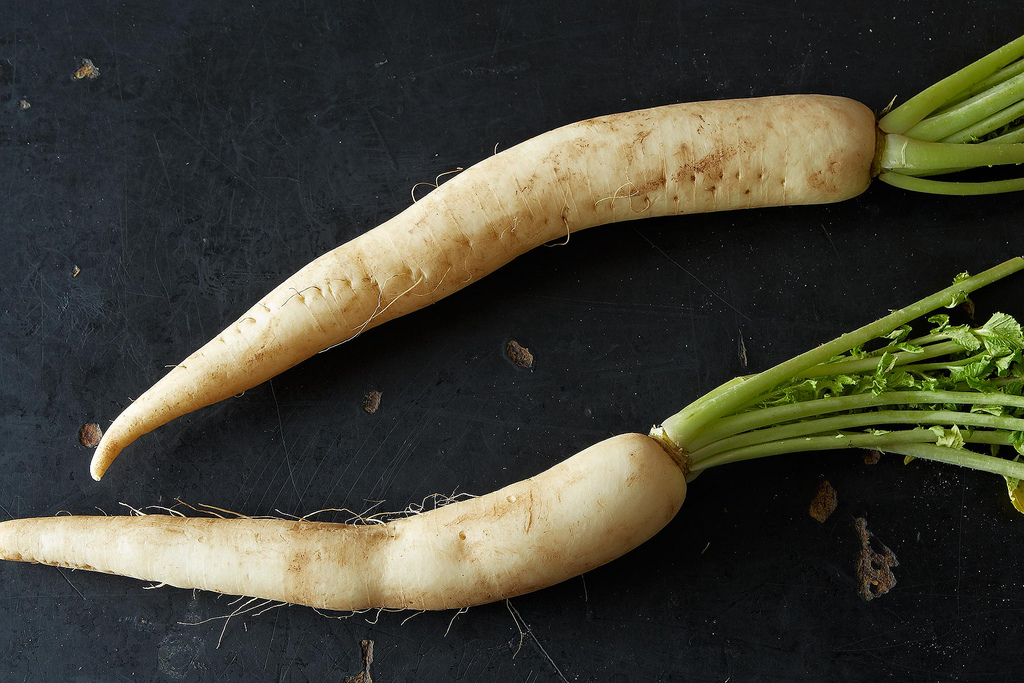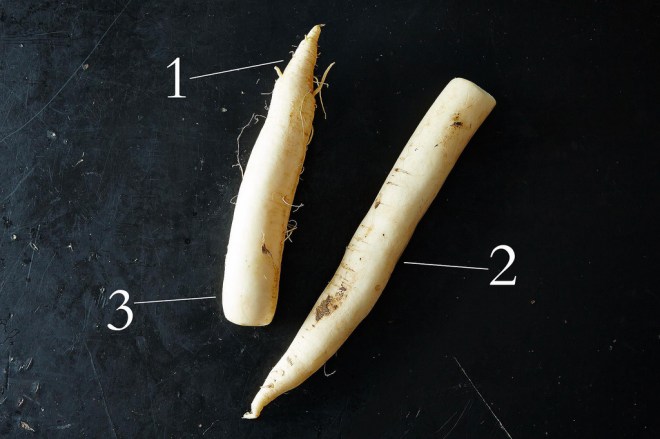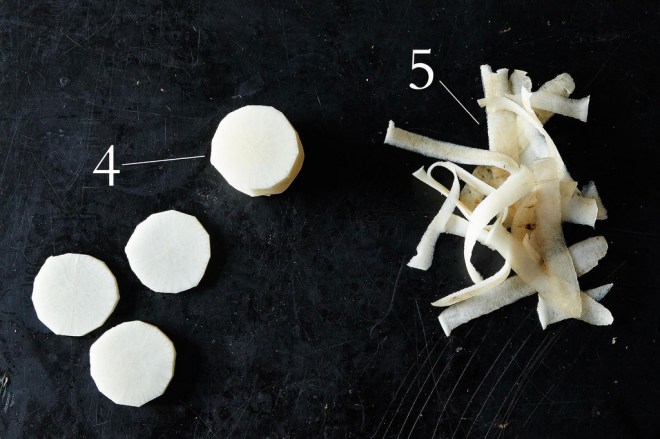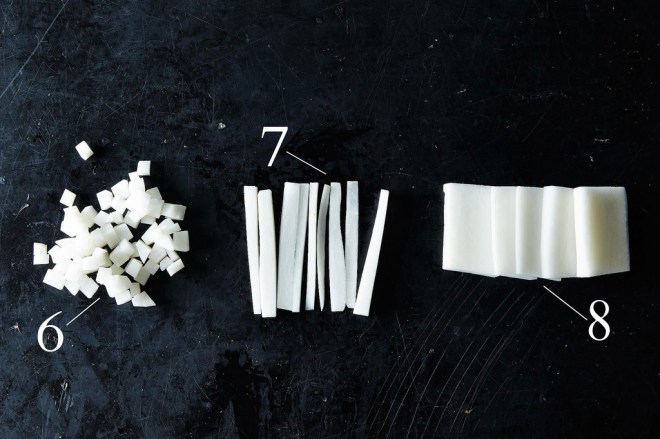Daikon is a radish, so it’s a member of the brassica family along with familiar cool-weather favorites like cauliflower, brussels sprouts, and turnips, and funkier family members like broccoli rabe, tatsoi, and mizuna.
To pick up a daikon at your farmers market or an Asian market (where you should be able to find it year-round), you have to either already be familiar with its extreme versatility or have a serious sense of adventure. It takes gumption to blindly head home with a vegetable as long as your arm.
If your daikon comes with the leaves still attached, cut them off and store both pieces separately in the refrigerator. The leaves are edible, but can be pretty potent; add them to a soup, or mix them in with other greens to mitigate their spicy bite. Daikon will last a long time in your refrigerator, even once cut (just wrap the remainder in plastic wrap or put it in a plastic bag) — but be forewarned: Once it’s cut, your fridge is not going to smell good. At all.
When I was living in Japan, I was a member of a CSA and frequently received daikon large enough to cradle in my arms like a baby. Even though I’ve eaten more than my fair share of it, I still can’t be considered a daikon connoisseur because I don’t use the parts of the root differently based on their variation in flavor. Real daikon mastery requires cooking based on the knowledge that the part closest to the leaves (3) is said to be the sweetest, while the end of the root (1) has the most bite to it and the middle (2) is somewhere in between.
Like carrots, daikon just needs a good scrub; it doesn’t have to be peeled (5), but I tend to — unless I’m grating it.
Radishes might not seem particularly versatile, but daikon radishes can actually be used in a variety of ways (including as props for dancing). And that’s a good thing because it can take you a while to work your way through a multi-pound radish. Here are 11 ideas for using your giant daikon that are so good you’ll want to run out for another one:
- Radishes are delicious roasted, and daikon’s no exception.
- Cut daikon into thick disks (4) and braise them in dashi — bevel the top and bottom edges to help the disks to keep their shape (otherwise they may splinter at the edges).
- Add it to sandwiches (like a bành mí) or tacos.
- Try daikon in beef dishes like slow-braised short ribs.
- Yes, you can pickle it.
- Use daikon in dressings and sauces.
- Dice (6) or julienne (7) daikon to use raw in salads, slaws, and noodle dishes.
- Tuck strips of daikon into sushi or fresh spring rolls.
- Add larger chunks (8) of daikon to soups and stews. (If you’re working your way through a giant daikon, this is where you’ll want to use the mid-section (2, above) — it’s the part of the daikon often used for oden, a dish with stewed vegetables, eggs, and other items.)
- Grate your daikon and make radish dumplings.
- Really finely grated daikon (this known as daikon oroshi) can be served alongside fish or tofu as a condiment, or added to dipping sauces for tempura or noodles. If you’re aiming for daikon expert status, use the spicy tip (1, above) for this.
And an added bonus: They might also be able to help the environment. What’s not to love?






